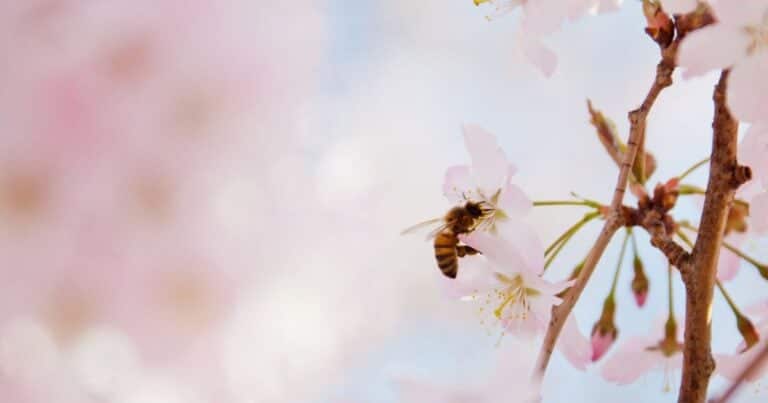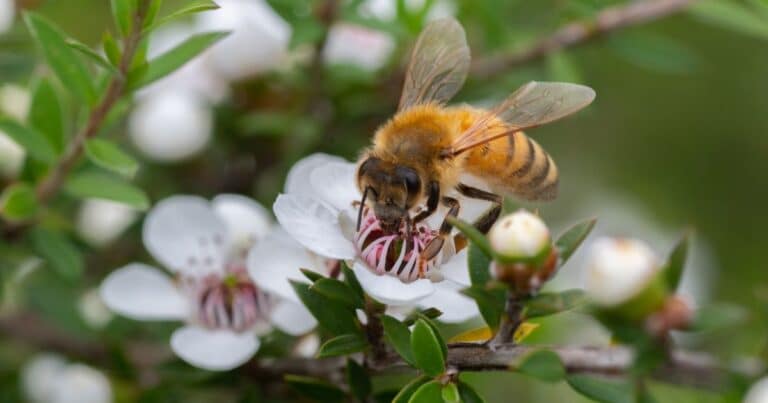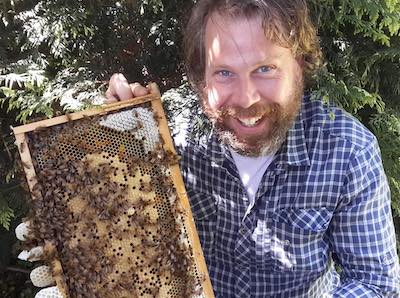Mad Honey Part 2: A Perilous Tradition
Small doses of mad honey can induce an ’exhilarating, relaxing, invigorating euphoria mixed with a sense of calm contentedness’ or a ‘soothing sense of inebriation’, together with (reputedly) enhanced sexual performance.

Consumption of larger quantities can, however, lead to dizziness, vomiting, hallucinations and even cardiac arrest.
Could be any one of a variety of recreational drugs, right?
But this is a rare, naturally occurring substance that has been coveted by local cultures for millennia.
The psychoactive properties of ‘mad honey’ are derived from a group of compounds called grayanotoxins, which are sequestered from the pollen and nectar collected from species of Rhododendron and other related genera of plants (Agarista, Pieris and Kalmia) belonging to family Ericaceae.
More than 25 different grayanotoxins have been identified from rhododendrons, and these chemicals are common throughout the various tissues and secretions of plants.
In humans, grayanotoxins bind to voltage-gated sodium ion channels in the cell membranes of neurons, causing prolonged depolarisation – in layman’s terms this equates to overstimulation of the central nervous system.
The acronym ‘SLUDGE’ is used to describe some of the symptoms produced: salivation, lacrimation (crying), urination, defecation, gastrointestinal distress and emesis (vomiting).
Ingestion of significant concentrations of these toxins may also lead to dizziness and blurred vision, weakness, excessive perspiration, and cardiovascular issues including arrhythmia and a drop in blood pressure.
Although rarely fatal, severe grayanotoxin poisoning is anything but pleasant, despite the ability of small amounts to produce pleasurable effects.
In order for the resultant honey to have any potency, bees must forage primarily upon plant species that contain particularly high levels of grayanotoxins. Most notably, this occurs during late spring in parts of Turkey and Nepal, where a prolific rhododendron bloom dominates the floral landscape.
Xenophon, Aristotle and Pliny the Elder are among a number of ancient scholars to document the effects of mad honey consumption, and King Mithridates of Pontus (part of Asia Minor and modern-day Turkey) apparently used it to good effect in 69 BC to deliberately poison an invading Roman army!
Known in Turkey as deli bal, mad honey is reddish in colour, with a bitter taste. Exported across Europe, where it became known as miel fou (or ‘crazy honey’ in French), it was used in the 18th century to add a kick to alcoholic drinks.
Turkish beekeepers near the Black Sea will strategically position their hives close to rhododendron groves; the honey is used locally as a traditional medicine to relieve pain and stress and to treat stomach problems, arthritis and migraines.
In Nepal, ‘red honey’ is created solely by the Himalayan giant honey bee (Apis laboriosa) which seasonally migrates from the rainforests of the Terai to the foothills of the Himalayas. There, at altitudes that may exceed 4,000 metres, the bees forage amongst several abundant Rhododendron species.
The nests of these impressive insects (the largest species of honey bee in existence) are only to be found clinging to sheer cliffs, far above the ground. This makes harvesting of the honey a perilous undertaking – especially when aided by nothing other than ancient ropes and ladders, and a bamboo pole.
The indigenous Gurung people will commonly take a spoon of red honey in their morning tea, purportedly to boost immune function and general health, and to produce uplifting effects throughout the day.
After consuming two teaspoons of the honey, one visitor to the region described an experience similar to that induced by marijuana – a general cooling sensation, but at the same time with a hot feeling in the stomach – that lasted for several hours.
Internet sites claiming to sell authentic Himalayan red honey are littered with disclaimers that their product should only be used responsibly by adults, and some sources strongly recommend against its consumption under any circumstances.
Due to its rarity and the risks associated with collection, mad honey is expensive and can sell for $100 per 100 grams. Tourists in Nepal may pay up to US$1,500 for the privilege of accompanying locals on a traditional honey hunt!
But aside from recreational usage, does this hallucinogenic honey have any demonstrated medicinal benefits? There is some evidence that grayanotoxins may be effective in treating hypertension, as well as diabetes and high cholesterol.




